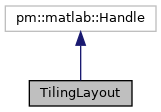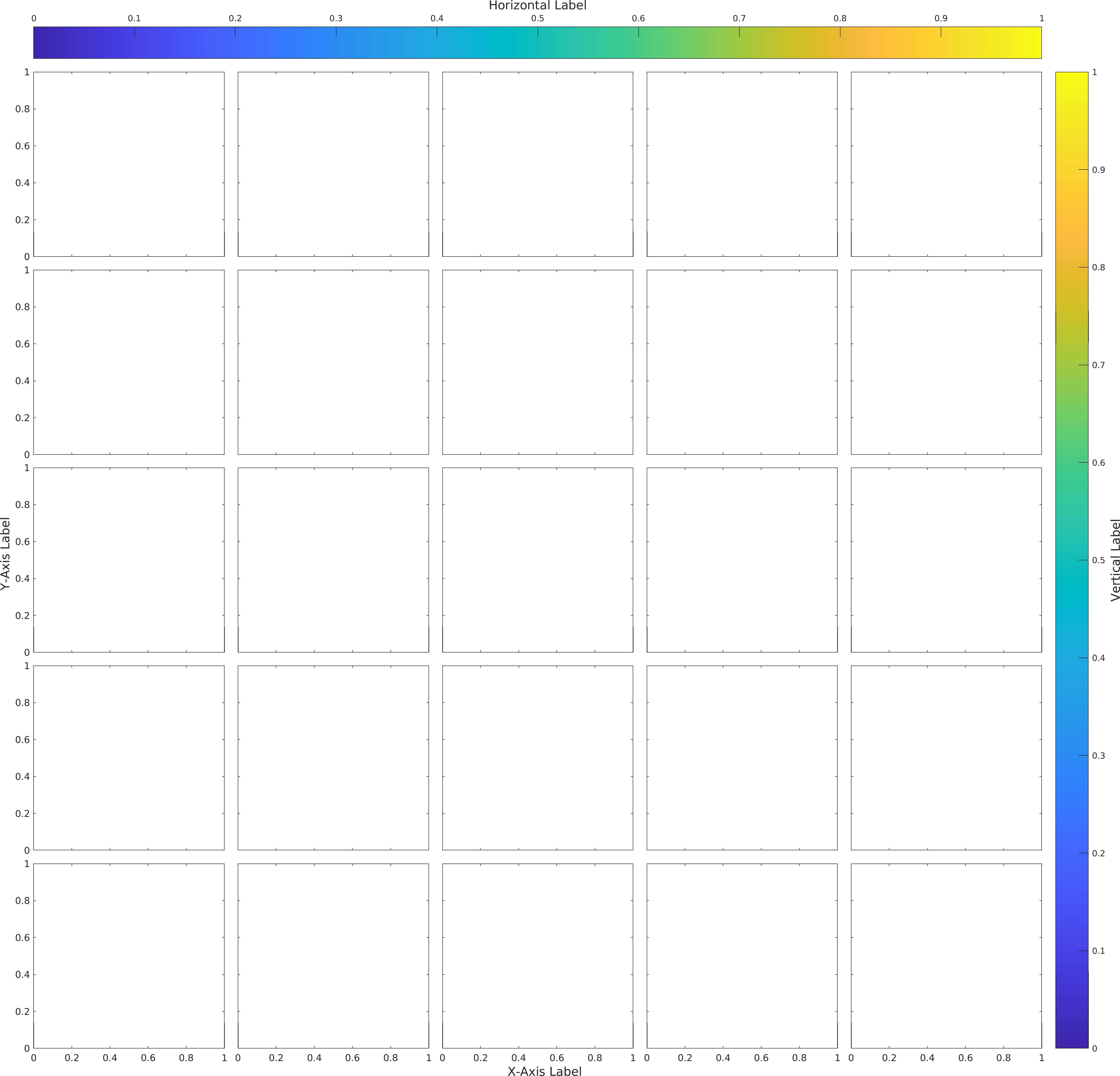
|
ParaMonte MATLAB 3.0.0
Parallel Monte Carlo and Machine Learning Library
See the latest version documentation. |

|
ParaMonte MATLAB 3.0.0
Parallel Monte Carlo and Machine Learning Library
See the latest version documentation. |
This is the base class for generating instances of objects that contains layout information for a set of tiled subplots in a single figure.
More...


Public Member Functions | |
| function | TilingLayout (in nrow, in ncol, in varargin) |
| Construct and return an object of class pm.vis.TilingLayout. More... | |
| function | reset (in self, in varargin) |
| Reset the properties of the figure to the original default settings. More... | |
| function | update (in self, in varargin) |
| Update the figure, tiling, and colorbar layout based on the specified components positions. More... | |
Data Fields | |
| Property | position |
| Property | tiling |
| Property | cbarh |
| Property | cbarv |
This is the base class for generating instances of objects that contains layout information for a set of tiled subplots in a single figure.
For more information, see the documentation of the class constructor pm.vis.TilingLayout::TilingLayout.
tiledlayout.GridPlot in ParaMonte V1).
Final Remarks ⛓
If you believe this algorithm or its documentation can be improved, we appreciate your contribution and help to edit this page's documentation and source file on GitHub.
For details on the naming abbreviations, see this page.
For details on the naming conventions, see this page.
This software is distributed under the MIT license with additional terms outlined below.
This software is available to the public under a highly permissive license.
Help us justify its continued development and maintenance by acknowledging its benefit to society, distributing it, and contributing to it.
Definition at line 26 of file TilingLayout.m.
| function TilingLayout::TilingLayout | ( | in | nrow, |
| in | ncol, | ||
| in | varargin | ||
| ) |
Construct and return an object of class pm.vis.TilingLayout.
This is the constructor of the class pm.vis.TilingLayout.
| [in] | nrow | : The input scalar MATLAB positive whole-number, containing the number of rows of axes in the tiling. |
| [in] | ncol | : The input scalar MATLAB positive whole-number, containing the number of columns of axes in the tiling. |
| [in] | varargin | : Any property, value pair of the parent object.If the property is a struct(), then its value must be given as a cell array, with consecutive elements representing the struct property-name, property-value pairs.Note that all of these property-value pairs can be also directly set via the parent object attributes, before calling the make() method. |
self : The output scalar object of class pm.vis.TilingLayout.
Possible calling interfaces ⛓
Example usage ⛓

Final Remarks ⛓
If you believe this algorithm or its documentation can be improved, we appreciate your contribution and help to edit this page's documentation and source file on GitHub.
For details on the naming abbreviations, see this page.
For details on the naming conventions, see this page.
This software is distributed under the MIT license with additional terms outlined below.
This software is available to the public under a highly permissive license.
Help us justify its continued development and maintenance by acknowledging its benefit to society, distributing it, and contributing to it.
| function TilingLayout::reset | ( | in | self, |
| in | varargin | ||
| ) |
Reset the properties of the figure to the original default settings.
Use this method when you change many attributes of the plot and you want to clean up and go back to the default settings.
| [in] | self | : The implicitly-passed input argument representing the parent object of the method. |
| [in] | varargin | : Any property, value pair of the parent object.If the property is a struct(), then its value must be given as a cell array, with consecutive elements representing the struct property-name, property-value pairs.Note that all of these property-value pairs can be also directly set via the parent object attributes, before calling the make() method. |
Possible calling interfaces ⛓
Final Remarks ⛓
If you believe this algorithm or its documentation can be improved, we appreciate your contribution and help to edit this page's documentation and source file on GitHub.
For details on the naming abbreviations, see this page.
For details on the naming conventions, see this page.
This software is distributed under the MIT license with additional terms outlined below.
This software is available to the public under a highly permissive license.
Help us justify its continued development and maintenance by acknowledging its benefit to society, distributing it, and contributing to it.
| function TilingLayout::update | ( | in | self, |
| in | varargin | ||
| ) |
Update the figure, tiling, and colorbar layout based on the specified components positions.
For example, change the tiling or colorbar positions or the tile counts through the relevant object components, then use this method to renormalize all positions (to range [0, 1]) and update the individual tile positions.
| [in] | self | : The implicitly-passed input argument representing the parent object of the method. |
| [in] | varargin | : Any property, value pair of the parent object.If the property is a struct(), then its value must be given as a cell array, with consecutive elements representing the struct property-name, property-value pairs.Note that all of these property-value pairs can be also directly set via the parent object attributes, before calling the make() method. |
Possible calling interfaces ⛓
Example usage ⛓
Final Remarks ⛓
If you believe this algorithm or its documentation can be improved, we appreciate your contribution and help to edit this page's documentation and source file on GitHub.
For details on the naming abbreviations, see this page.
For details on the naming conventions, see this page.
This software is distributed under the MIT license with additional terms outlined below.
This software is available to the public under a highly permissive license.
Help us justify its continued development and maintenance by acknowledging its benefit to society, distributing it, and contributing to it.
| Property TilingLayout::cbarh |
cbarh
The MATLAB struct containing information about the horizontal colorbar that can be optionally added to the main axes (i.e., the collection of all axes).
It has the following components:
position : The MATLAB vector of length four containing a set of positive normalized values in the range [0, 1], representing the whole colorbar coordinates as [startx, starty, width, height].margint : The MATLAB scalar positive double in the range [0, 1], representing the top margin of the horizontal colorbar that appears on top of the tiling.0.07.enabled : The MATLAB logical scalar that allows addition of the colorbar if true.false.Definition at line 98 of file TilingLayout.m.
| Property TilingLayout::cbarv |
cbarh
The MATLAB struct containing information about the horizontal colorbar that can be optionally added to the main axes (i.e., the collection of all axes).
It has the following components:
position : The MATLAB vector of length four containing a set of positive normalized values in the range [0, 1], representing the whole colorbar coordinates as [startx, starty, width, height].marginr : The MATLAB scalar positive double in the range [0, 1], representing the top margin of the vertical colorbar that appears to the right of the tiling.0.07.enabled : The MATLAB logical scalar that allows addition of the colorbar if true.false.Definition at line 120 of file TilingLayout.m.
| Property TilingLayout::position |
position
The MATLAB vector of length four containing a set of positive values representing the figure pixel coordinates as [startx, starty, width, height] with respect to the screen.
The default value is set such that the whole tiling looks square-shaped.
Definition at line 41 of file TilingLayout.m.
| Property TilingLayout::tiling |
tiling
The scalar MATLAB struct containing the following components:
nrow : The MATLAB scalar positive whole-number representing the number of subplots in each column of the subplot tiling.ncol : The MATLAB scalar positive whole-number representing the number of subplots in each row of the subplot tiling.tile : The scalar MATLAB struct containing the following components:width : The MATLAB scalar positive number in the range [0, 1], containing the width of each tile (subplot) along the x-axis in normalized units with respect to the tiling width.14 / 15.height : The MATLAB scalar positive number in the range [0, 1], containing the height of each tile (subplot) along the x-axis in normalized units.14 / 15.position : The MATLAB tensor of shape [4, nrow, ncol], each [:, irow, icol] slice of which contains a set of positive normalized values in the range [0, 1], representing the position of the tile sitting at [irow, icol] starting from the top-left corner of the tiling.update() method.position : The MATLAB vector of length four containing a set of positive normalized values in the range [0, 1], representing the whole tiling coordinates as [startx, starty, width, height].[0.07, 0.07, 0.93, 0.93].Definition at line 76 of file TilingLayout.m.